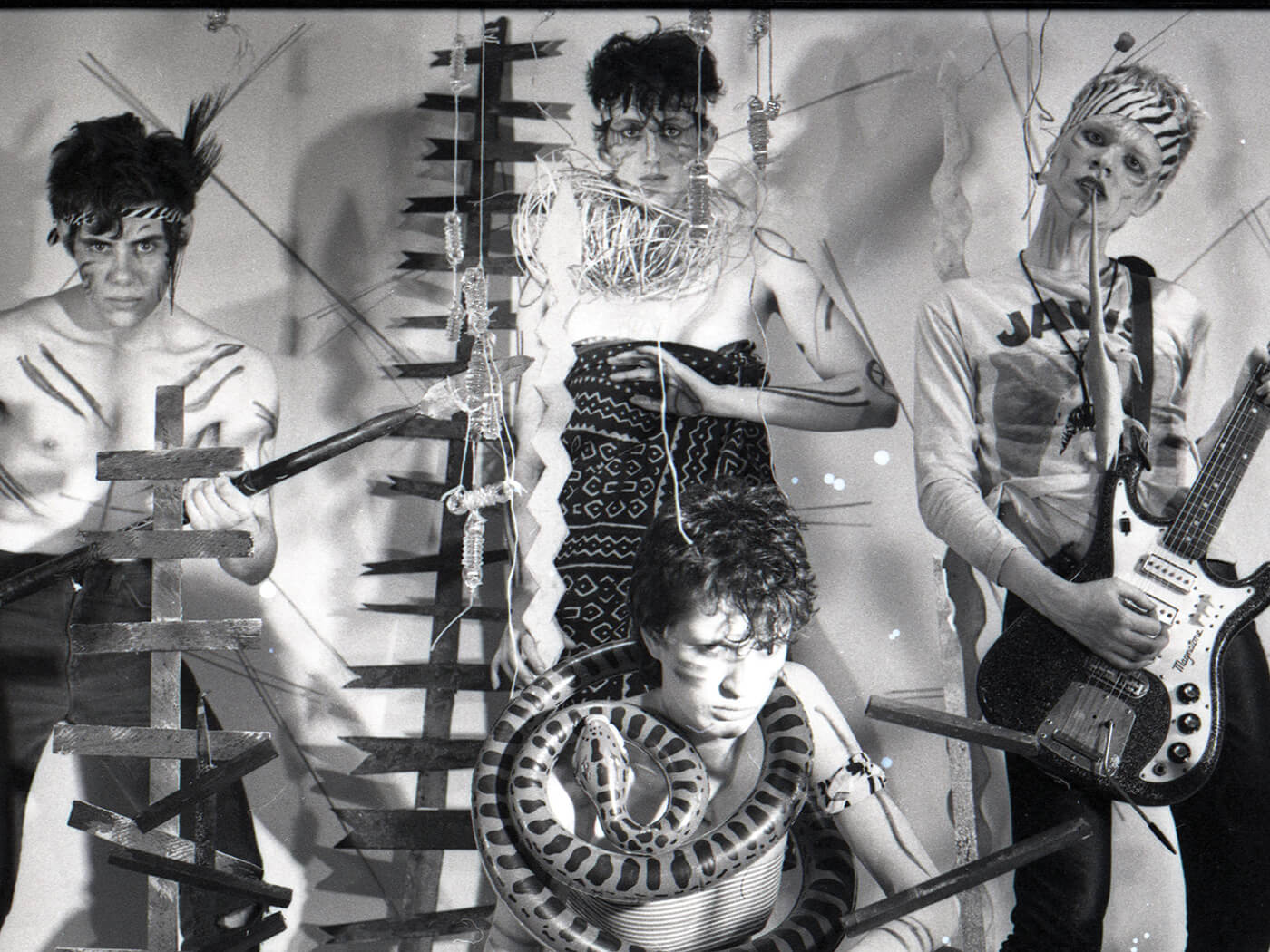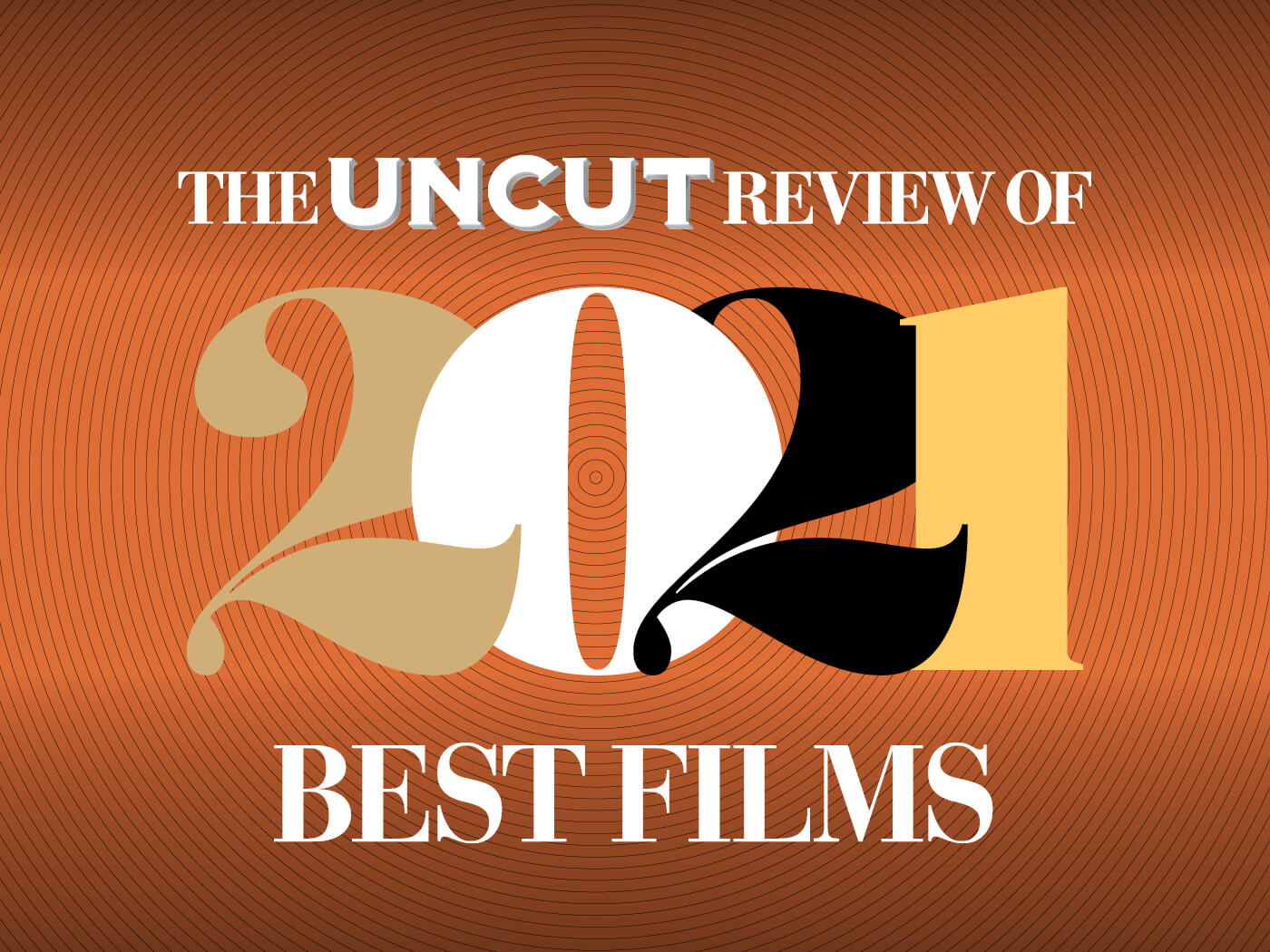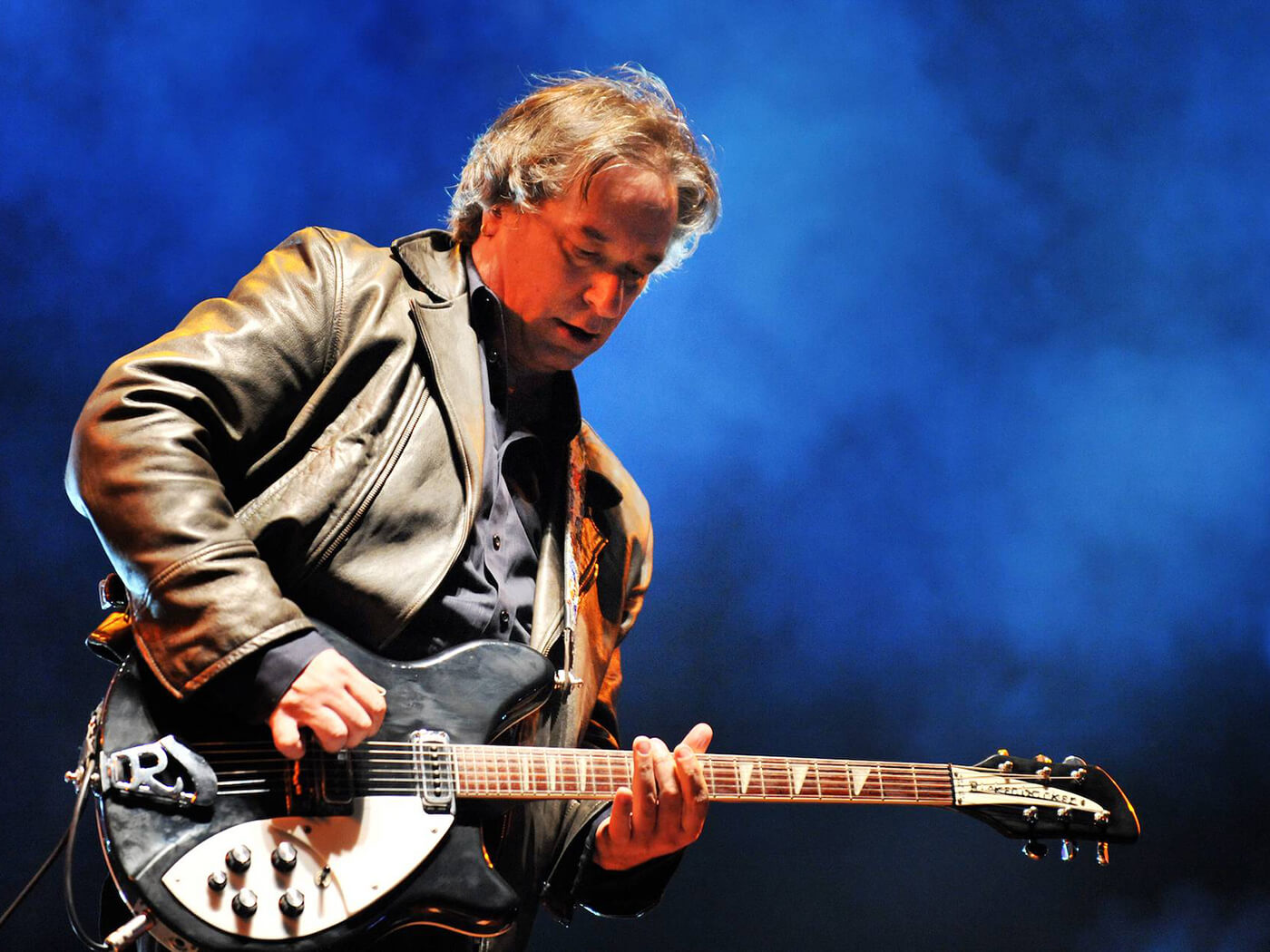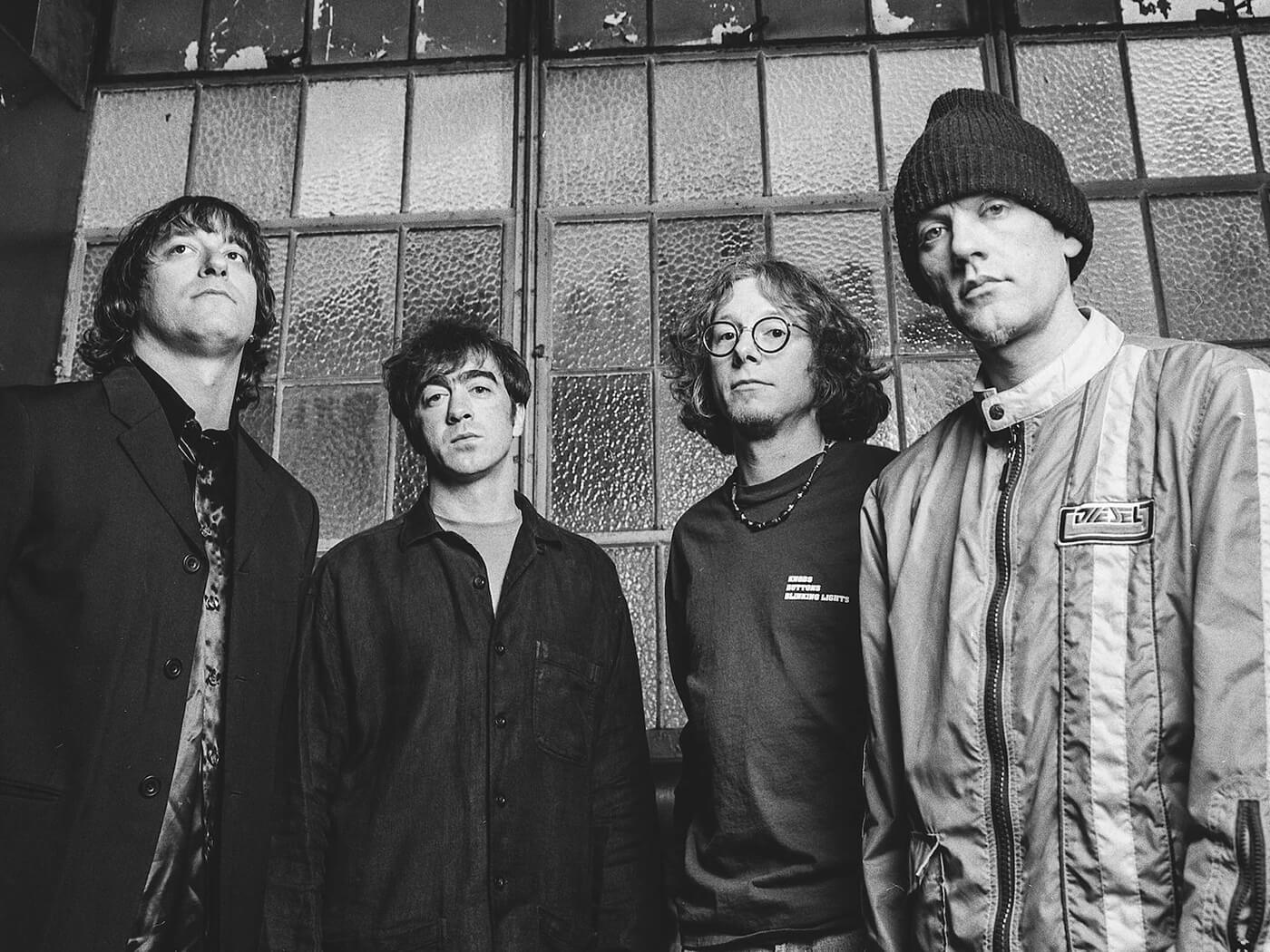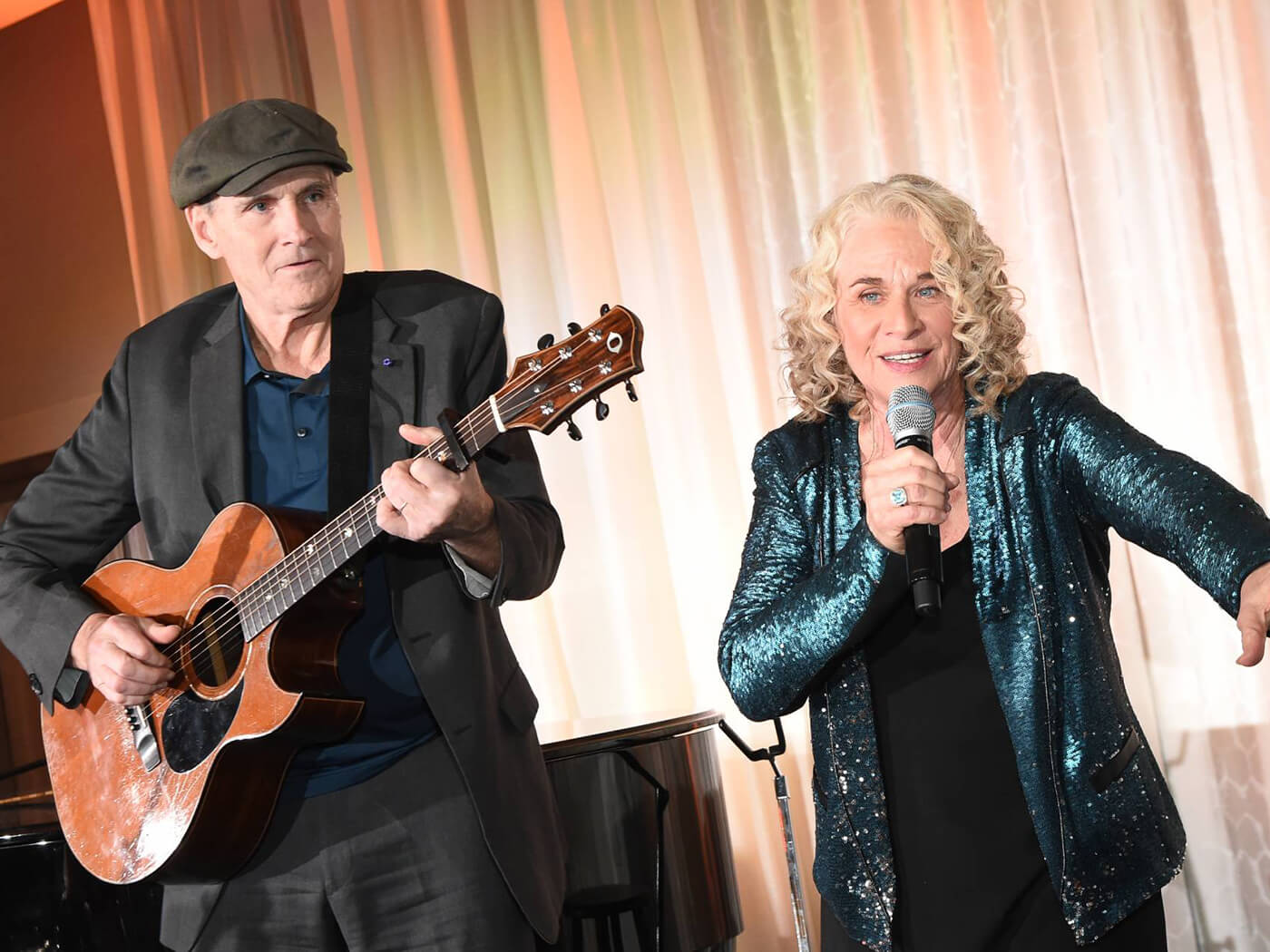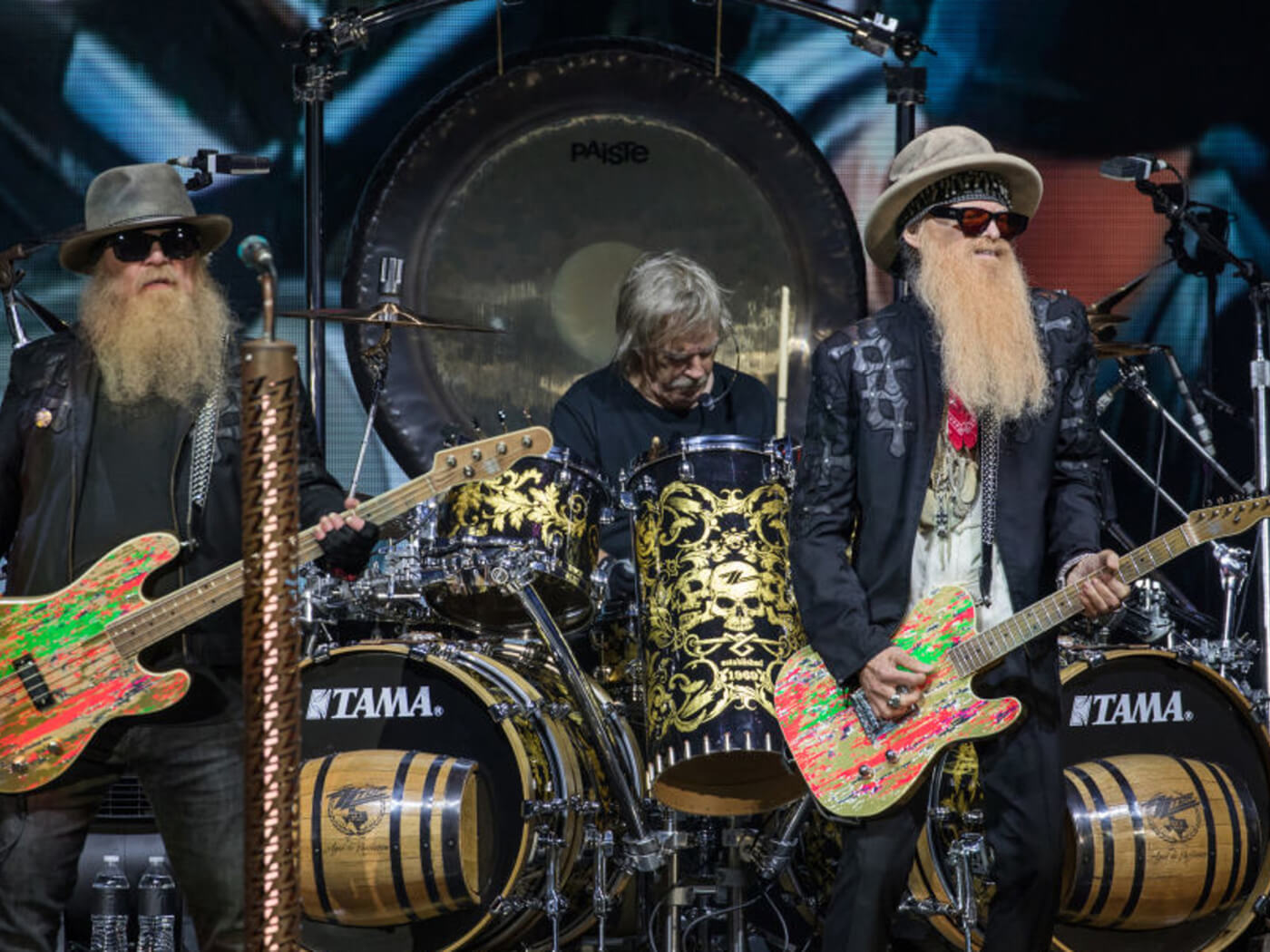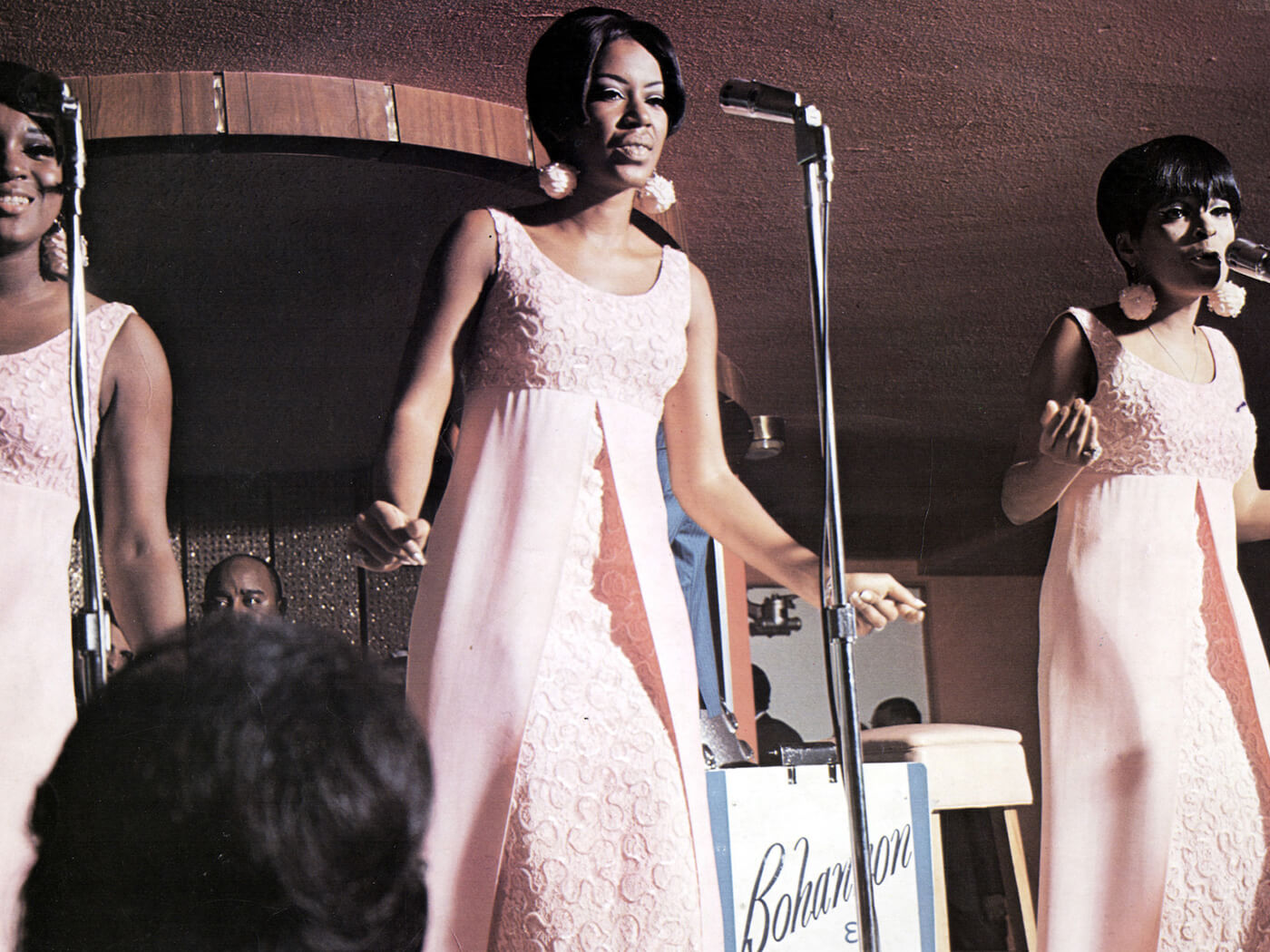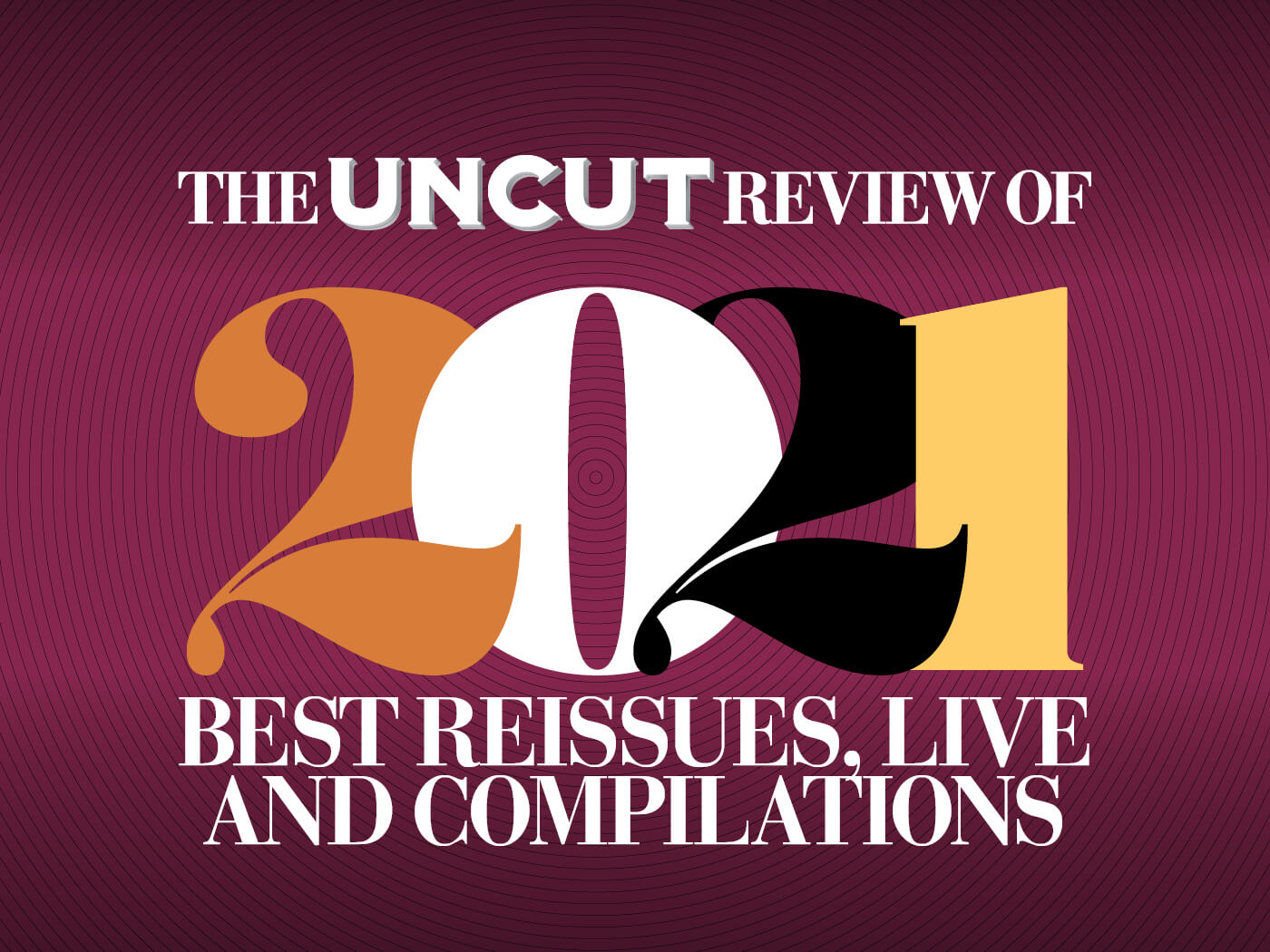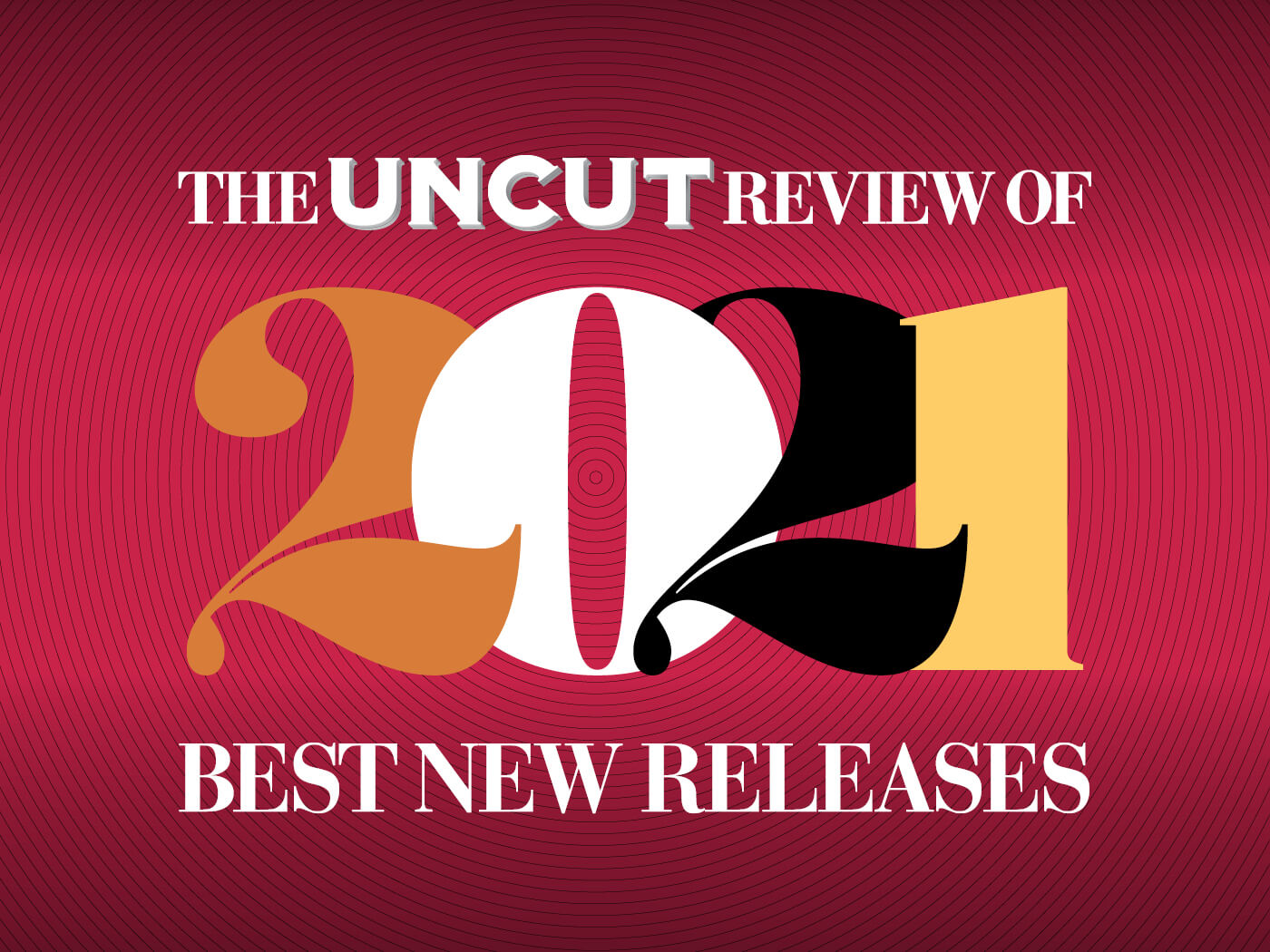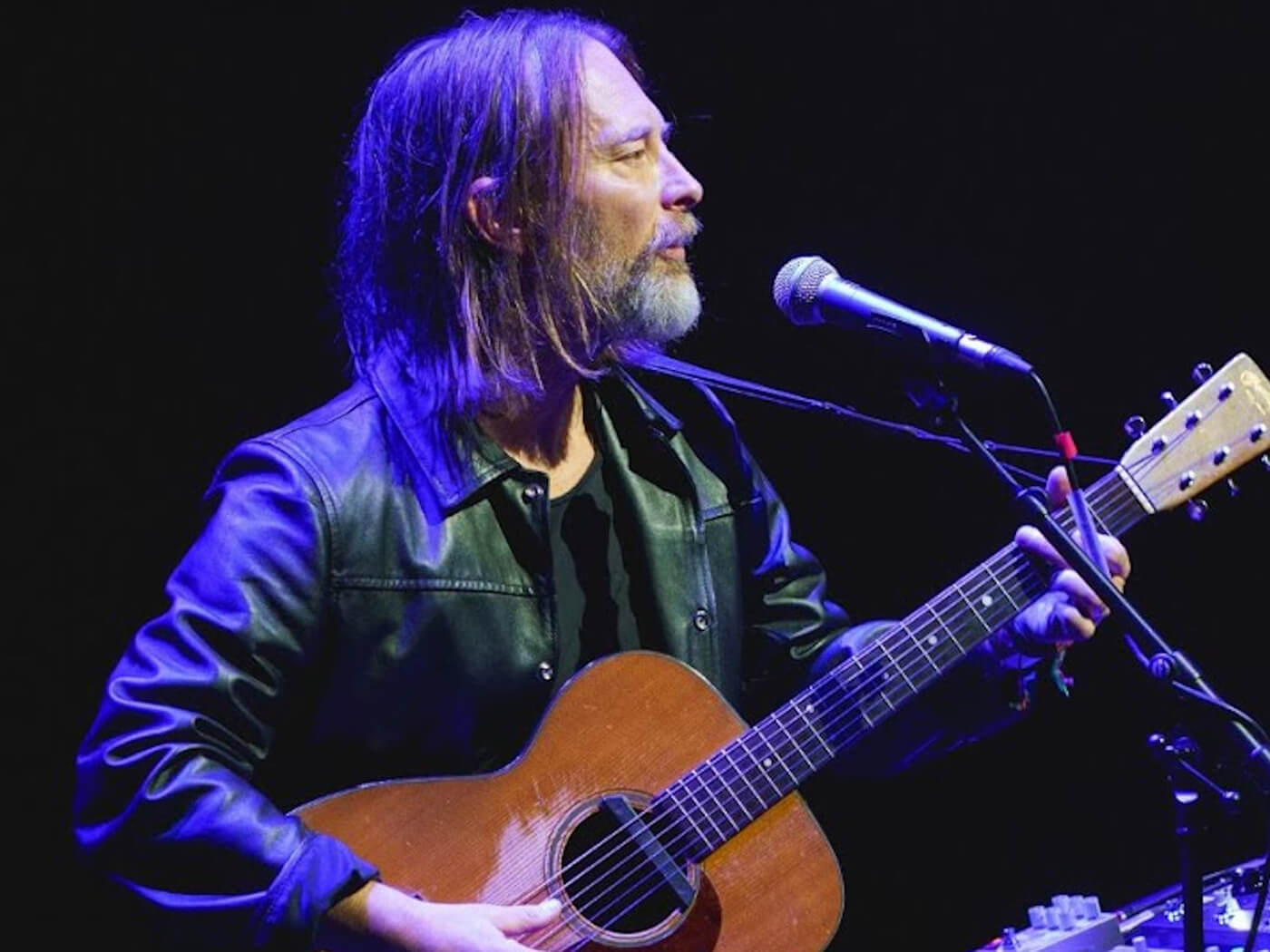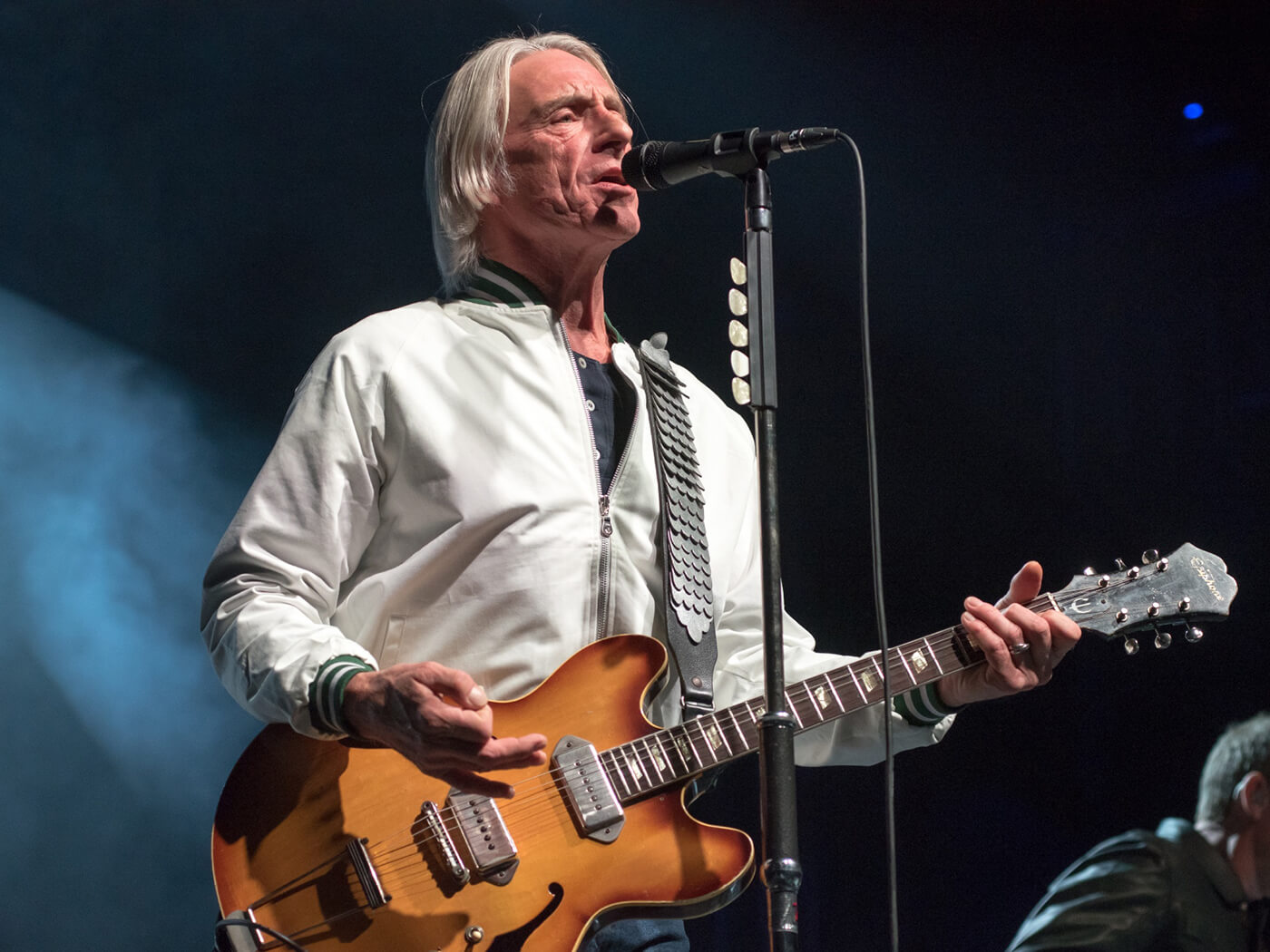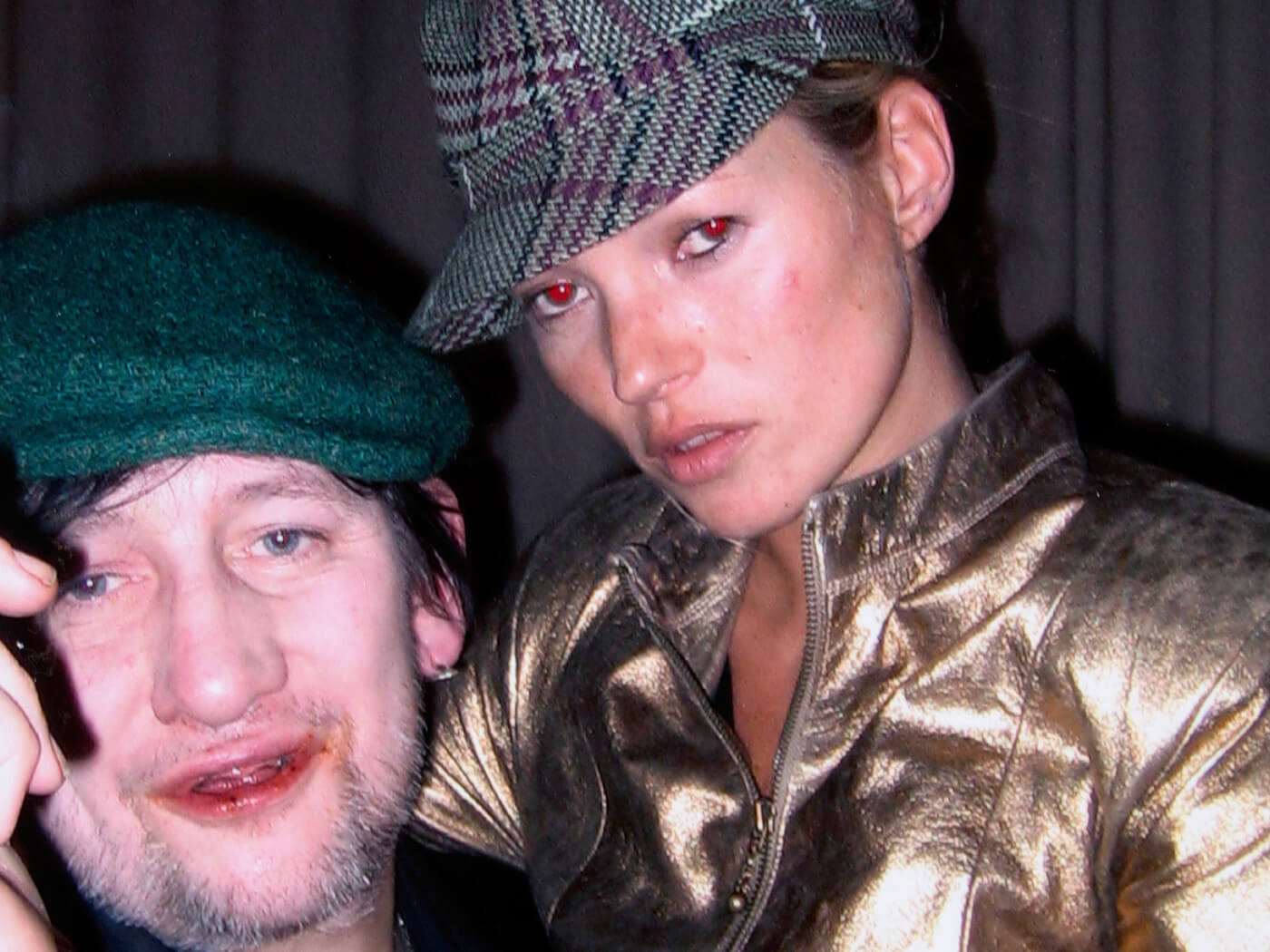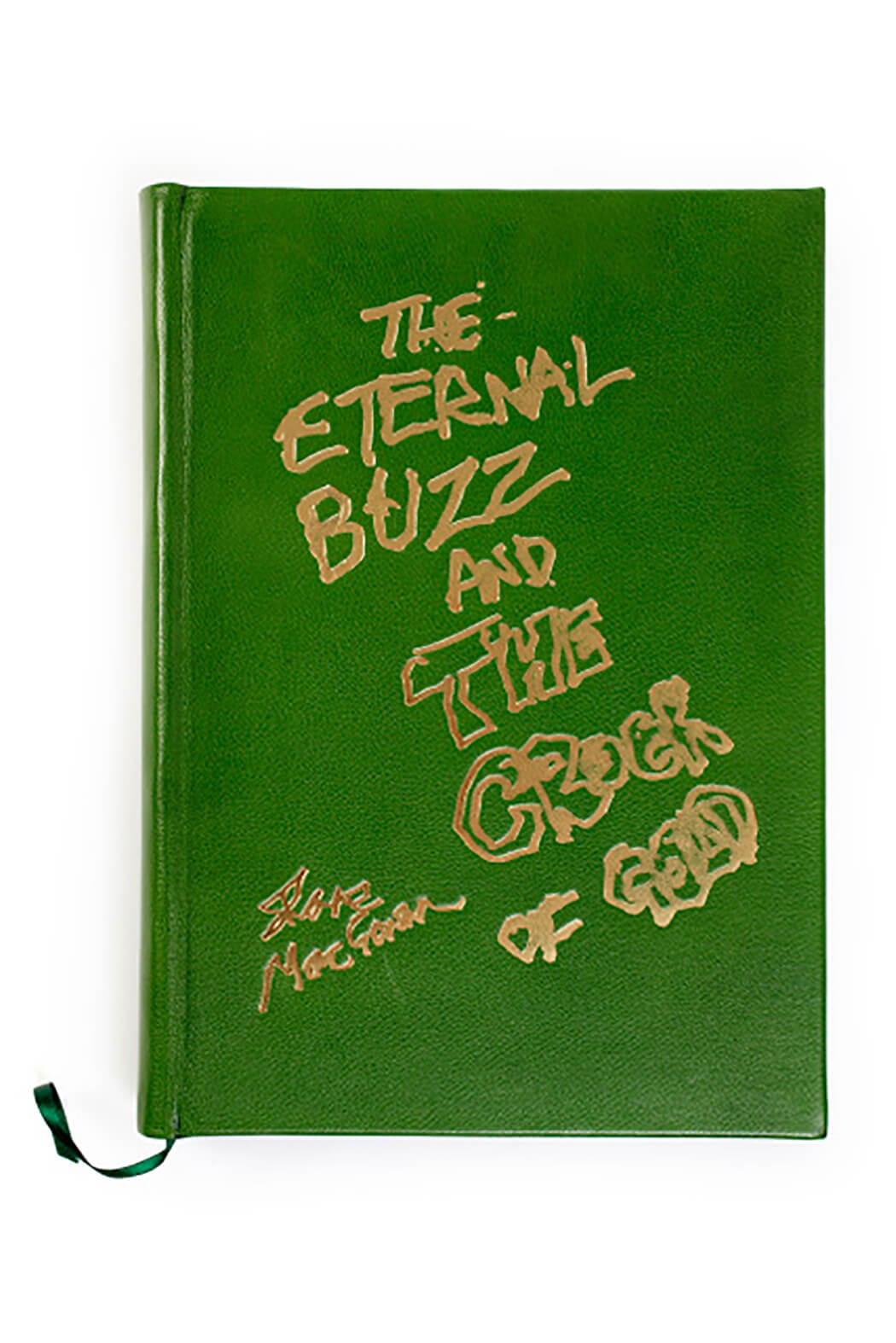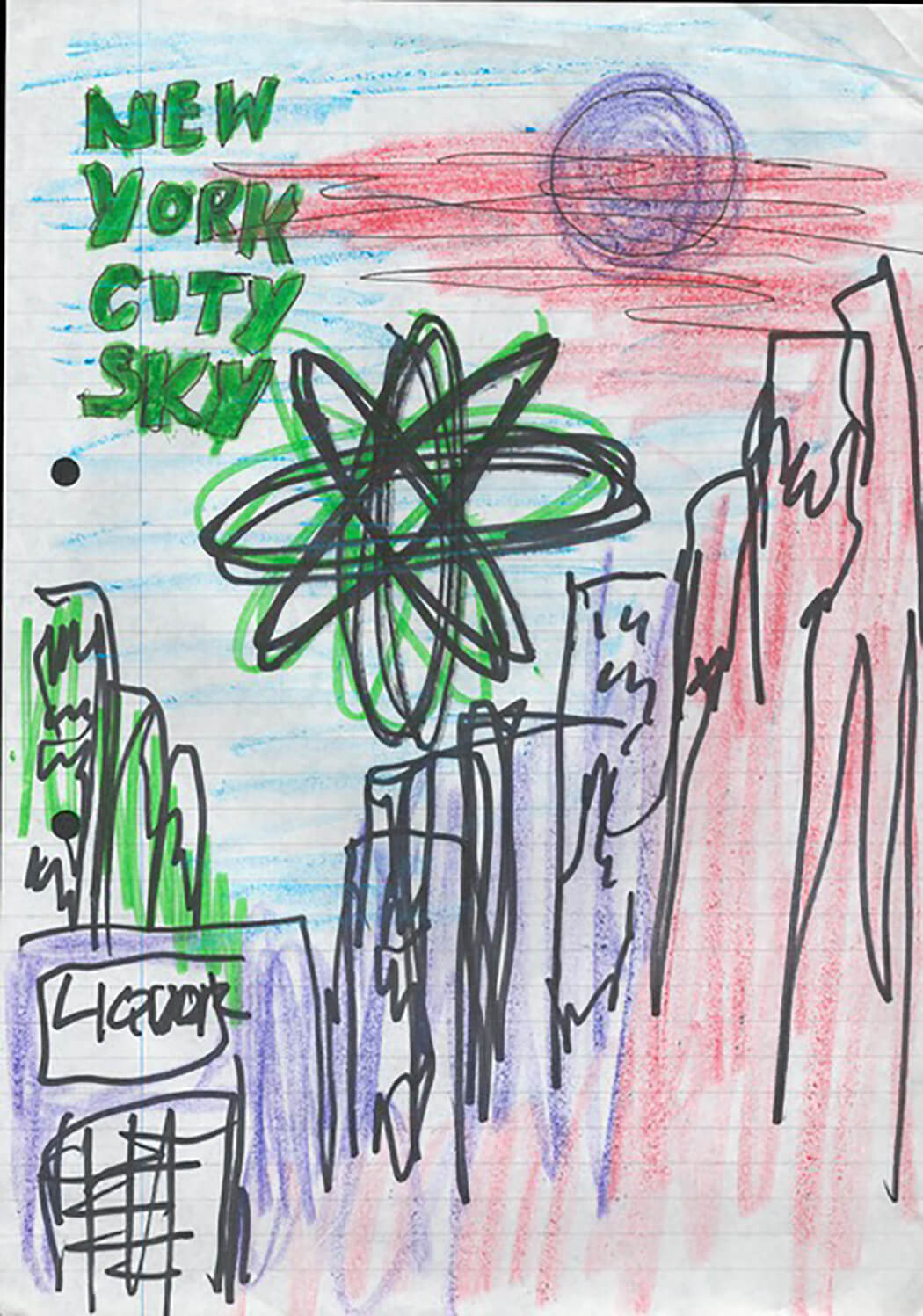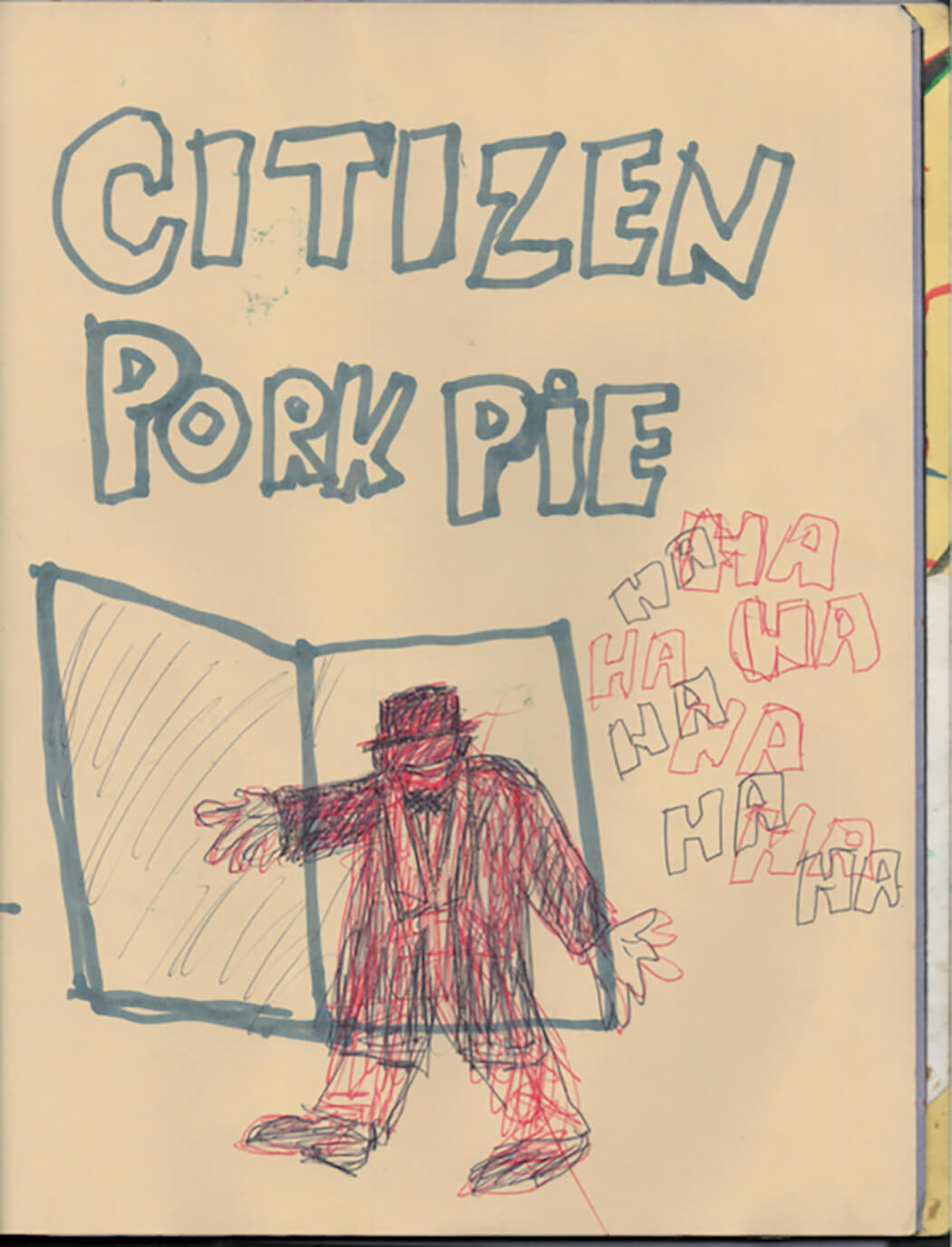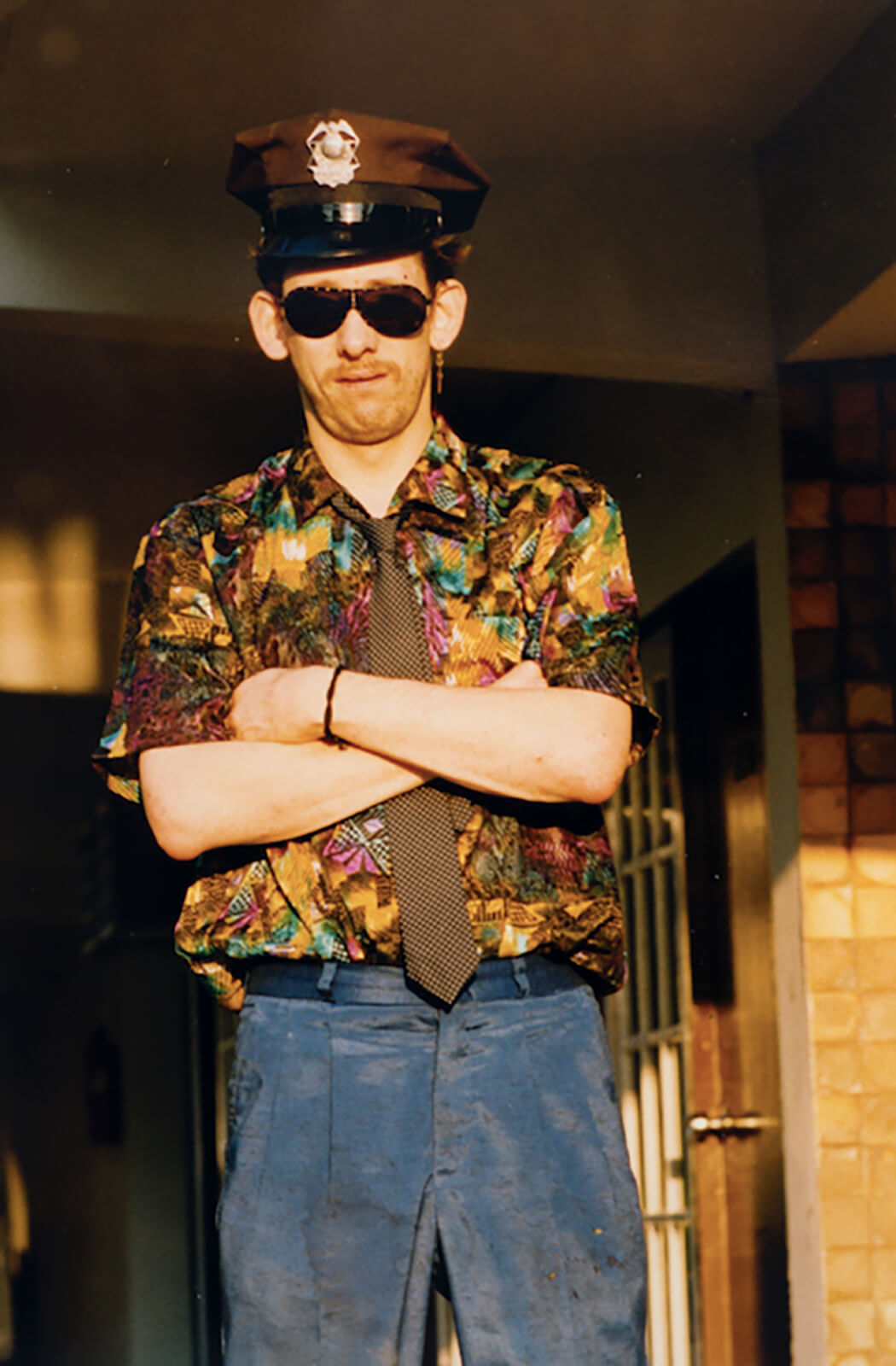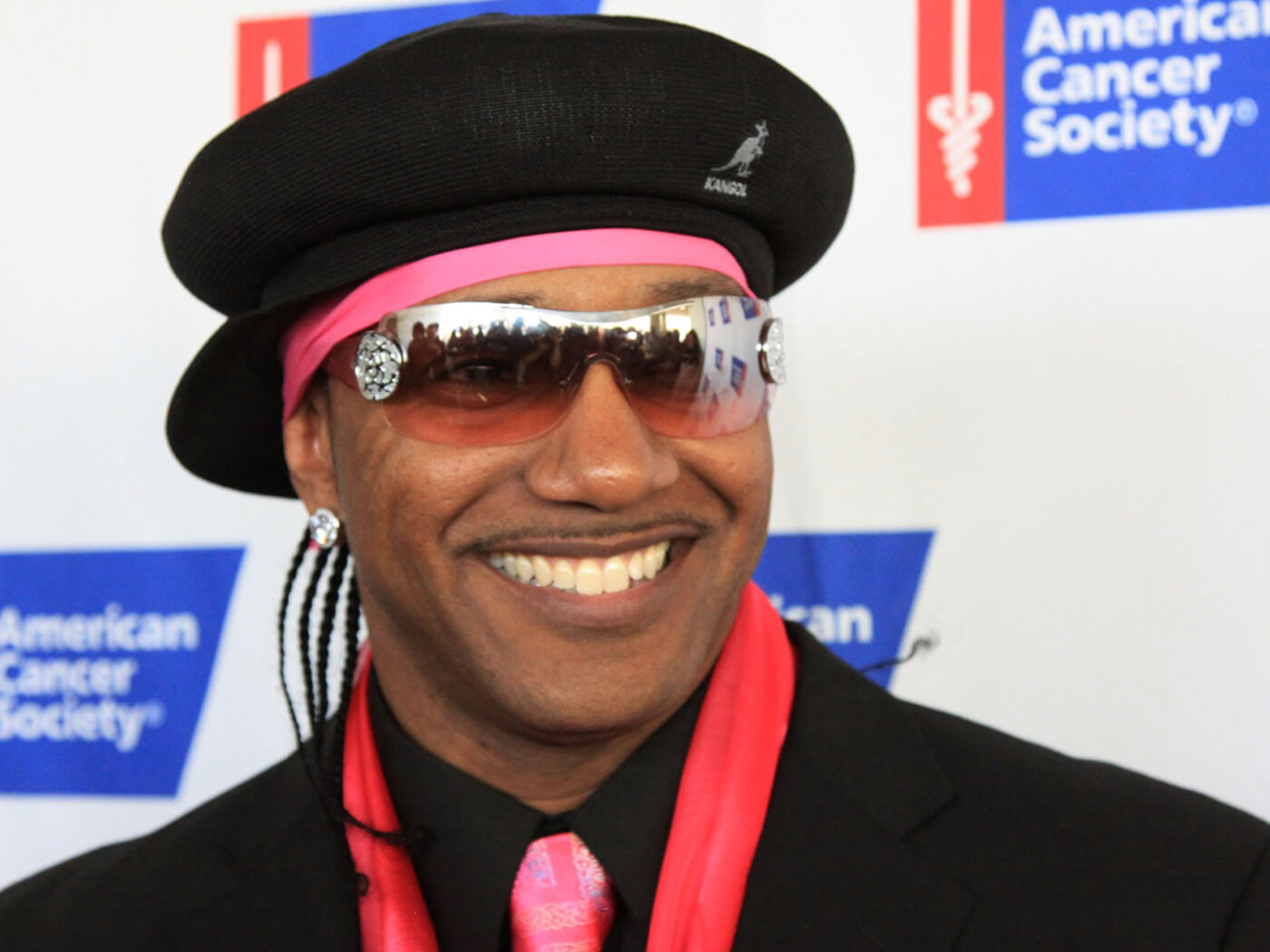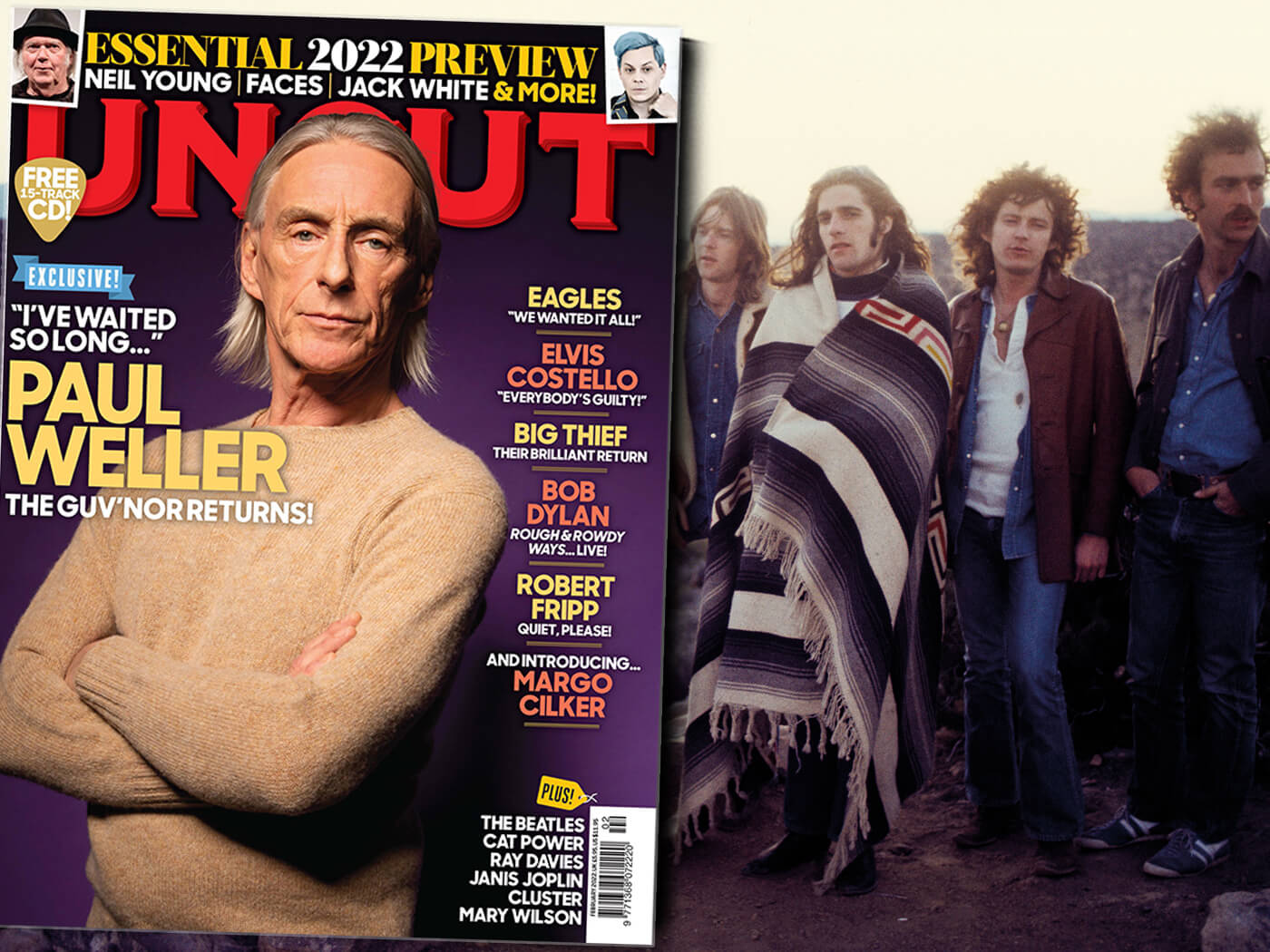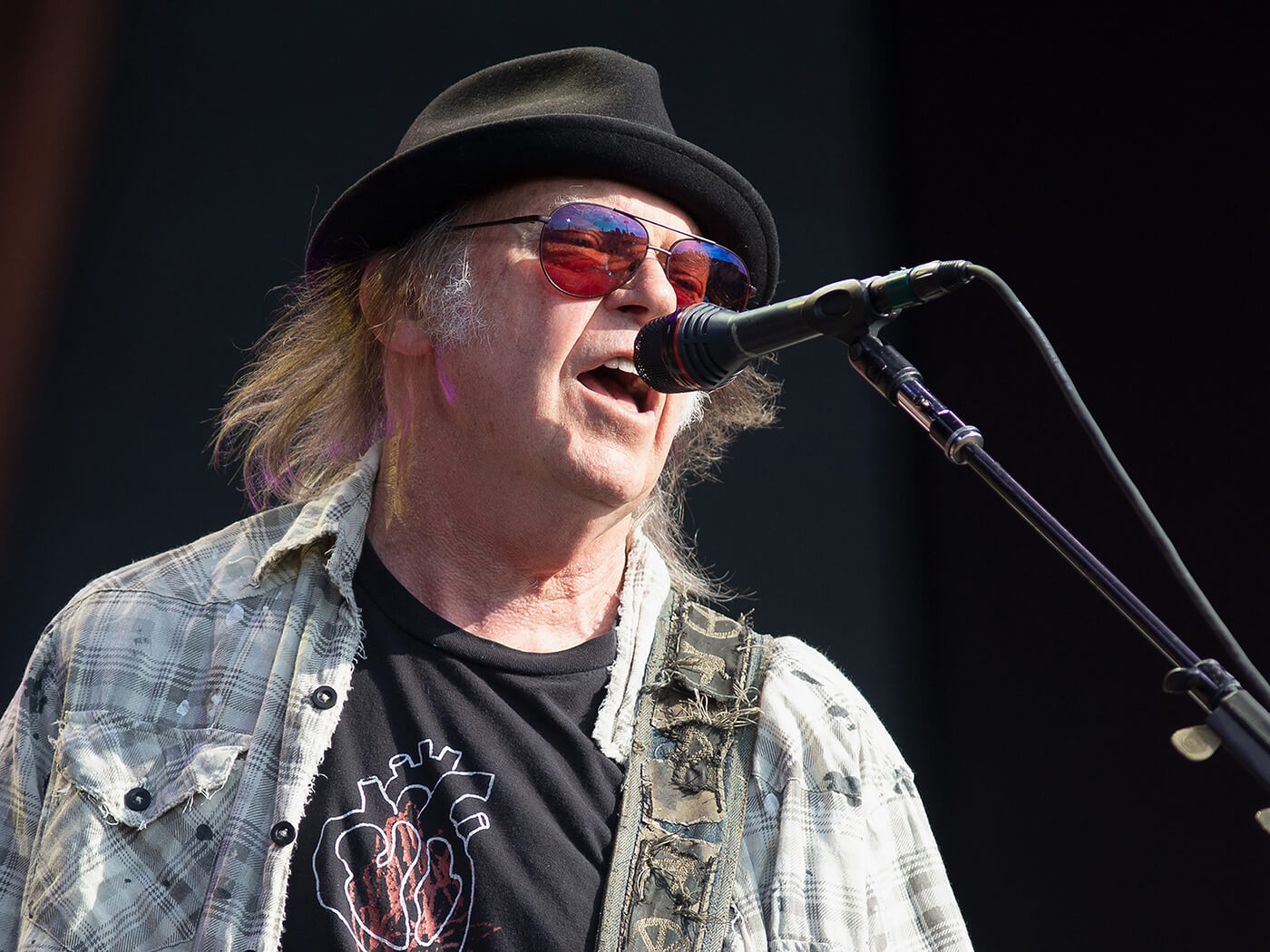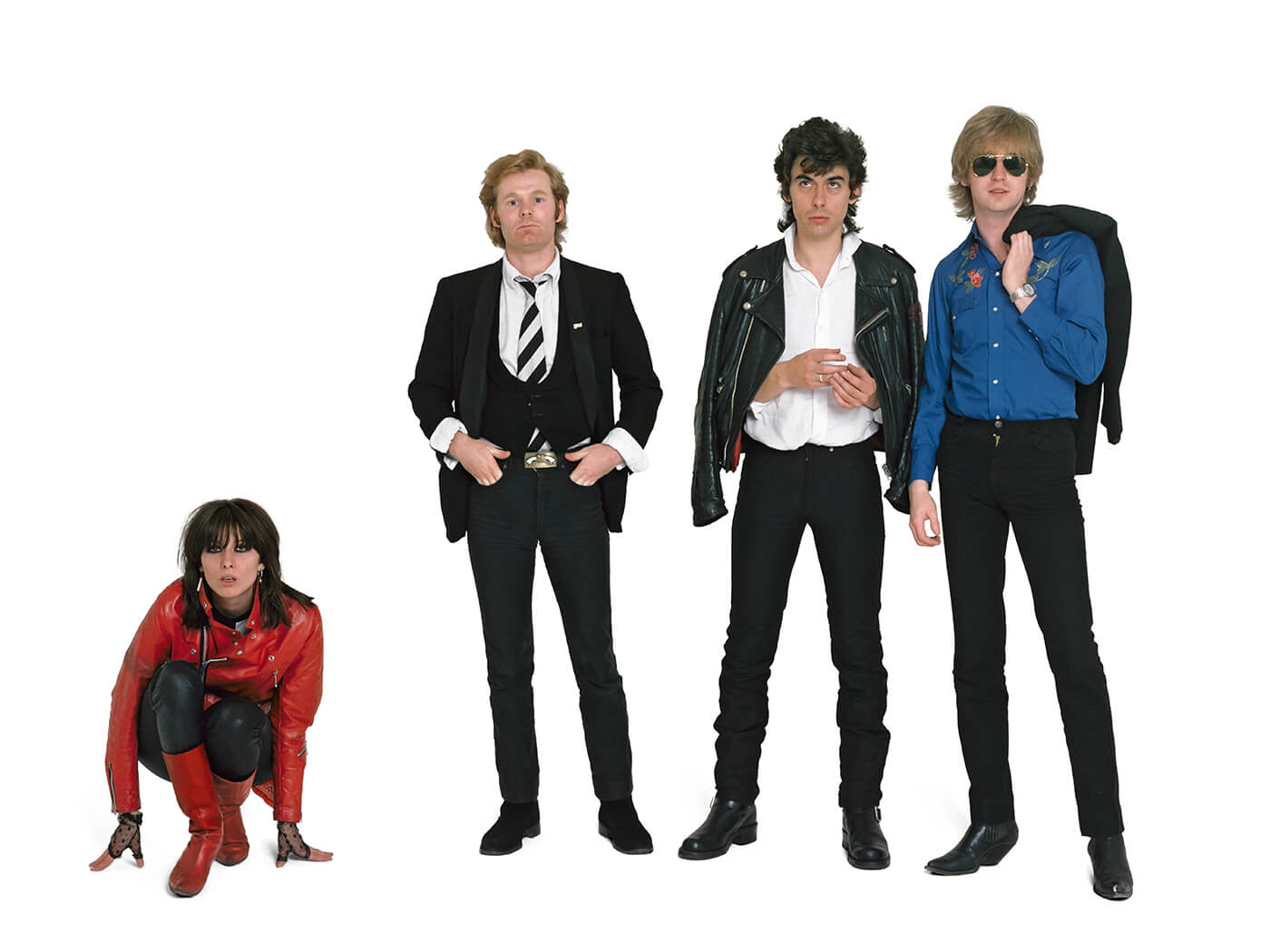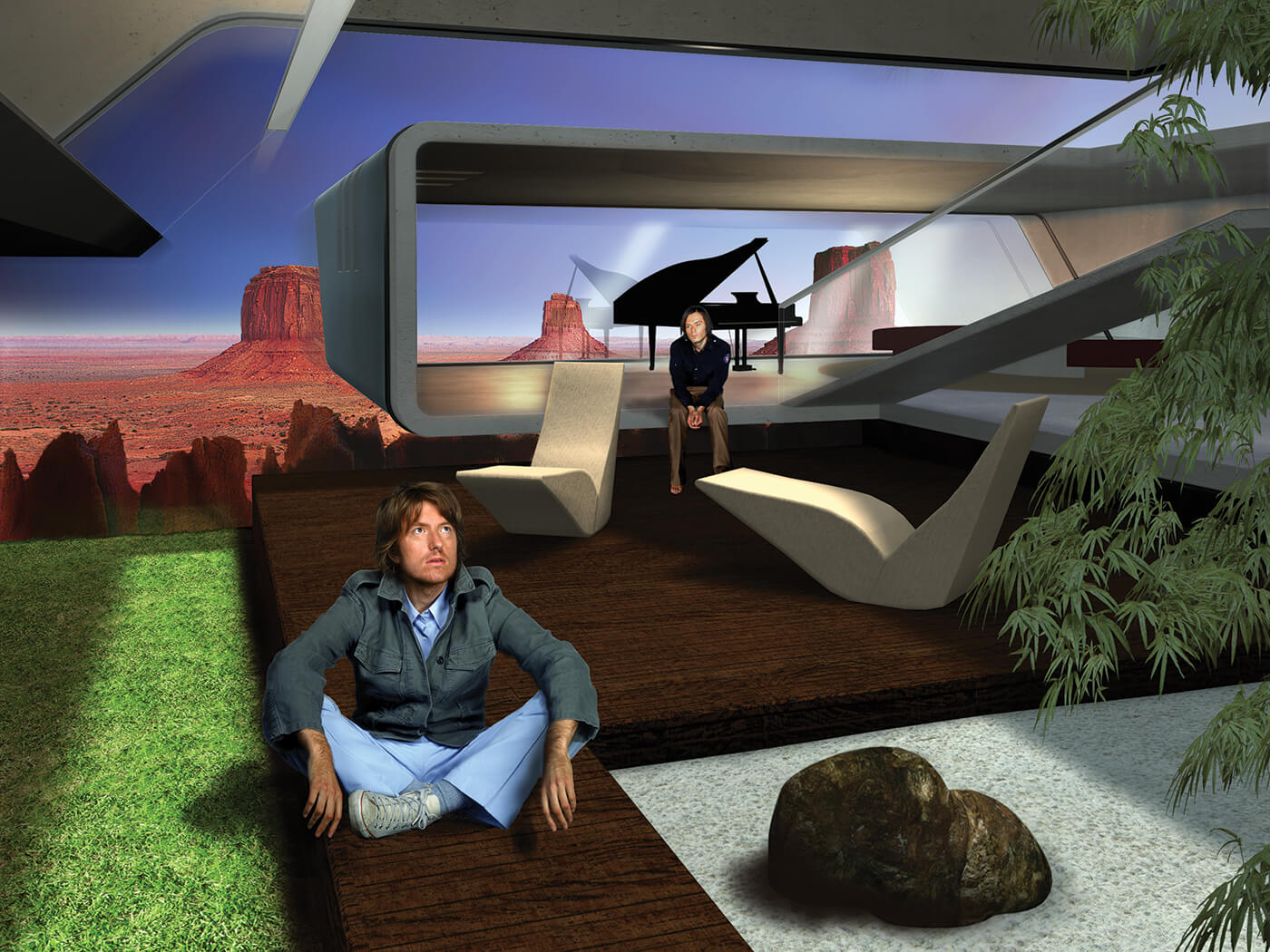50 LINDSEY BUCKINGHAM
Lindsey Buckingham
REPRISE
Delayed by health problems, a global pandemic and more, the guitarist and singer’s first solo album in a decade didn’t disappoint when it finally arrived this autumn. These 10 compact songs were pure distilled Buckingham, written, produced and played entirely on his own, including surprises on the loop-based “Swan Song” and drifting, quasi-ambient closer “Dancing”, plus some modern classics such as REM-ish first single “I Don’t Mind”.
49 SUNBURNED
HAND OF THE MAN Pick A Day To Die
THREE LOBED
Their first proper album in a decade found the Massachusetts freak-folk collective on blistering form, flipping between pastoral reveries, acid nightmares and surging motorik jams on which they invited us to “feel the midnight”, “taste the campfire” and “do a Baltic salt therapy”. And for those still on the fence, the climactic “Prix Fixe” came with a bonus cascade of cosmic riffage from one J Mascis.
48 DAVID CROSBY
For Free
BMG
Crosby’s autumnal productivity continued apace as he approached his 80th birthday in August: For Free was his fifth album in seven years. His co-conspirators included his multi-instrumentalist/producer son James Raymond and their Sky Trails Band, plus a handful of esteemed guests including Michael McDonald and Donald Fagen. The album was full of personal reflection and jazz phrasing, which doubtless would have pleased the younger version of Crosby – who resurfaced this year on CSNY’s 50th-anniversary edition of Déjà Vu.
47 ELEPHANT9
Arrival Of The New Elders
RUNE GRAMMOFON
This Norwegian jazz-rock trio achieved a kind of telepathic abandon on this, their pulsating 10th record. In the mix of Ståle Storløkken’s keyboards, Nikolai Eilertsen’s bass and Torstein Lofthus’s drums there were echoes of electric Miles and Soft Machine, the grooves of krautrock and even of Air’s featherlight intrepidness, from the synth arpeggios of the title track and the Rhodes explorations of “Throughout The Worlds” to the eerie chillout of the closing “Solar Song”.
46 ISRAEL NASH
Topaz
LOOSE
From his homemade studio deep in Texas Hill Country, Nash continued to map the contours of cosmic country on this, his sixth album. The strength of Topaz lay in Nash’s ability to juggle the personal with the political, finding a natural space for reflection during a tumultuous time: “My heart is a canyon/The flashing flood won’t drown you out”, he sang on “Canyonheart”. Elsewhere, his rich stew of soul, gospel, psychedelia and folk provided suitably uplifting accompaniment.
45 BOBBY GILLESPIE & JEHNNY BETH
Utopian Ashes
SONY
In between writing his memoir and overseeing the 30th-anniversary release of Screamadelica, Gillespie reunited with the rest of Primal Scream and Savages’ Jehnny Beth for this duets album, heavily flavoured by the ‘love hurts’ strain of country rock. Hearing the Scream showcase a rootsier sound was a delight, while Gillespie found a new songwriting well to draw from, railing less against the military industrial complex and instead contemplating more intimate dramas, ably abetted by Beth.
44 RHIANNON GIDDENS WITH FRANCESCO TURRISI
They’re Calling Me Home
NONESUCH
Giddens and Italian percussionist Turrisi revisited the chemistry that made 2019’s There Is No Other so special on this varied collection, recorded in lockdown in Ireland. The range of material that Giddens turned her hand to was astonishing: from Monteverdi pieces and folk songs to Italian lullabies, bluegrass staples and modern songs from the Democratic Republic Of Congo, all beautifully adapted and given new life.
43 MY MORNING JACKET
My Morning Jacket
ATO
After six years of various solo ventures, the Kentucky quintet returned to what the opening track here confirmed was the “Regularly Scheduled Programming”: big-hearted, reverbed-soaked cosmic American rock, full of unashamedly classic riffs and hopeful sentiments. “There is more to life than what’s yours and what’s mine,” crooned Jim James. “Oh, I wish everyone could agree…”
42 FAYE WEBSTER
I Know I’m Funny Ha Ha
SECRETLY CANADIAN
In 2020, Webster’s track “Better Distractions” made it onto Barack Obama’s end-of-year playlist, setting a high bar for this, the fourth album by Atlantan singer-songwriter, photographer and yo-yo enthusiast. As it transpired, I Know I’m Funny Ha Ha lived up to expectations, with Webster channelling urban country, warm ’70s soul, gutsy classic rock and introspective indie-pop while delivering perfect vignettes about life, love and heartbreak.
41 DAMON ALBARN
The Nearer The Fountain, More Pure The Stream Flows
TRANSGRESSIVE
Started in Iceland but soaked in English melancholy, Albarn’s second proper solo album was a quiet, delicate and reflective affair, finding inspiration in such disparate subjects as the North Star, the 19th-century English poet John Clare and a local cormorant, as well as a tribute to his fallen collaborator, Tony Allen. The music was steeped in minor-chord atmospherics – but, reassuringly, Albarn found hope amid the bleak, drizzly landscape the songs inhabit.
40 STURGILL SIMPSON
The Ballad Of Dood & Juanita
HIGH TOP MOUNTAIN RECORDS
Following two albums of bluegrass takes of his own songs, Simpson gave us a concept album about the sharp-shooting Dood – “the son of a mountain miner and a Shawnee maid” – as he searches for his kidnapped love during the American Civil War. The story
may feel ripped from an RKO western, but Simpson leans into it, while the lively mix of traditional mountain music, gospel and cowboy crooning vividly brought his storytelling to life.
39 SQUID
Bright Green Field
WARP
Emerging from the same unkempt, overthought milieu as Black Country, New Road and Black Midi, this Brighton-formed quintet’s debut album attempted to fuse dance-punk, jazz, noise and deadpan Ballardian narratives to predictably volatile effect. “Don’t push me in!” yelled singing drummer Ollie Judge, as if attempting to resist being consumed by the thrilling vortex of his own band’s music. Too late!
38 MADLIB
Sound Ancestors
MADLIB INVAZION
Now that modern hip-hop is no longer built on loops of old records, sampledelia has become a bit of a lost art. But Mablib is one of its true masters, whether it’s digging deeper into the crates to pull out the obscurest lo-fi soul and private press psych nuggets, or placing something more familiar – an unexpected glint of Young Marble Giants, say – in a fresh new context. Overseen by Four Tet, Sound Ancestors was a supple and surprisingly emotional hymn to the joys of musical discovery.
37 DEAN WAREHAM
I Have Nothing To Say To The Mayor Of LA
DOUBLE FEATURE
There is a thin line between elegant slackerdom and not really doing anything of note – and for most of the 21st century, the former Galaxie 500 and Luna frontman was in danger of tipping over it. But without abandoning his indolent approach, Wareham’s third solo album felt like a return to form, packed with casually brilliant tunes, terrifically wry lyrics, a Scott Walker cover… and even a withering anti-war song.
36 ARAB STRAP
As Days Get Dark
ROCK ACTION
Aidan Moffat and Malcolm Middleton’s return after 16 years gave them a No 1 in Scotland and a Top 15 position in the UK. It wasn’t just nostalgia behind this success, though, for As Days Get Dark was one of their finest records, updating their microscopic, bleak and sometimes hilarious examinations of life and masculinity for the present day, and their own middle age. Of the highlights, “The Turning Of Our Bones” was ominous digital post-rock, while “Another Clockwork”.
35 JOHN MURRY
The Stars Are God’s Bullet Holes
SUBMARINE CAT
Murry was on fine form on his third solo album, his songs processing trauma and existential pain in his customary wry, unflinching style. What made it stand out from his previous work (aside from the cover of Duran Duran’s “Ordinary World”, of course) were the soundscapes woven by Murry and producer John Parish, shrouding the songs in burnt-out, glitchy electronics and shards of grizzled sound.
34 COURTNEY BARNETT
Things Take Time, Take Time
MARATHON ARTISTS
If 2018’s Tell Me How You Really Feel was an extension of Barnett’s 2015 debut album, her third album instead marked a significant progression. Recorded quickly in Sydney with collaborator Stella Mozgawa, Things Take Time… was an organic, loose delight, driven by vintage drum machines and keyboards. Crucially, these textures left space for some of Barnett’s deepest and most concise songs yet, from the existential observations of “Rae Street” through to the profound simplicity of “Oh The Night”.
33 CHUCK JOHNSON
The Cinder Grove
VIN DU SELECT QUALITITE
One of the key artists to feature on our Ambient America compilation CD from earlier this year, the pioneering pedal steel guitarist made inventive use of space on this quietly mournful album. A fine follow-up to 2017’s fluid Balsams, the restorative serenity of The Cinder Grove proved deeply nourishing during 2021’s more tumultuous moments.
32 THE HOLD STEADY
Open Door Policy
POSITIVE JAMS/THIRTY TIGERS
Returning with their own record label, Craig Finn and co released their most melodramatic concept album yet: blue-collar opera, if you like. Guests including Stuart Bogie and Cassandra Jenkins (more from her later) appear across these 10 songs, which range in style from the glam groove of “Hanover Camera” to the brass-assisted riffing of “Family Farm”. Ultimately, though, it’s all classic Hold Steady: evocative, euphoric.
31 ROBERT PLANT & ALISON KRAUSS
Raise The Roof
ROUNDER RECORDS
The peripatetic Plant finally returned from his lengthy sojourn along the Timbuktu-Aberystwyth borders to reunite with Krauss on this sequel to their celebrated Raising Sand. Little had changed, pleasingly, in the 14 years since the original. This was yet another commendably low-key foray into American roots music, via covers of songs by Merle Haggard, Allen Toussaint, the Everly Brothers, Calexico and more.
30 TEENAGE FANCLUB
Endless Arcade
PIAS
Following the departure of Gerry Love in 2018, the remaining songwriting team of Norman Blake and Raymond McGinley carried on doing what they do best. Their 10th studio album continued to mine familiar themes – the end of love; stoicism in the face of emotional catastrophe; the importance of joy – with great craft. Breezy, minor- key melodies abound, and with the addition of Gorky’s Zygotic Mynci’s Euros Childs, they have found a kindred spirit.
29 STEVE GUNN
Other You
MATADOR
On which Steve Gunn’s journey from folk fingerpicker to indie singer-songwriter became more of a deliciously languid feedback loop. Expertly produced by Rob Schnapf, Other You’s guitar lines seemed to melt and merge into each other as if on a dub record, while Gunn’s voice, making a virtue of its limitations, has never sounded more beatifically reassuring.
28 RYLEY WALKER
Course In Fable
HUSKY PANTS
In the year that Genesis set off on their farewell tour, Ryley Walker outed himself as their biggest fan, stuffing his inquisitive post-folk-rock with all manner of deft tempo shifts and trap-door melodies. The lyrics may have initially seemed impenetrable – what the dickens is “A Lenticular Slap”? – but gradually revealed the self-reproving worldview of a wise jester on a quixotic search for the meaning of life… and on “Rang Dizzy”, perhaps even finding it.
27 ARLO PARKS
Collapsed In Sunbeams
TRANSGRESSIVE
This debut collection of “bedroom indie pop” made quite the stir this year, with West London’s Anaïs Marinho even picking up the Mercury Prize. The mood was hazy, the instruments as soft and unassuming as Parks’ voice and her moody, imagistic songwriting. “Hope” was the jazzy smash, “Bluish” a sampledelic trip-hop cut, while “Black Dog” mixed beats with nylon-string guitar and an arresting reference to Robert Smith’s eye makeup.
26 PAUL WELLER
Fat Pop (Volume 1)
POLYDOR
Recorded mostly during lockdown last spring and then completed at his Black Barn studio when the lifting of restrictions allowed his regular band to reconvene, Fat Pop (Volume 1) was Weller’s personal antidote to the pandemic. The result was (mostly) soothing cosmic soul: “Can you see the good things in your life?” he asked on “Cobweb/Connections”, drawing deep sustenance from the miracle of music.
25 JANE WEAVER
Flock
FIRE
The conceptual, cosmic frameworks that have characterised Weaver’s work for the last decade or so were thrown out on her ninth album – what was left were 10 accessibly weird and lyrically personal songs, and perhaps the best LP of her career. There was a new groove at work too, as demonstrated by the Funkadelic haze of “The Revolution Of Super Visions”, the hip-hop strut of “Sunset Dreams” (inspired by her kids’ favoured music) and the closing, exultant house of “Solarised”.
24 VALERIE JUNE
The Moon And Stars: Prescriptions For Dreamers
FANTASY
When Valerie June first arrived, the Memphis singer-songwriter offered a charmed take on country-folk blues. Her latest, meanwhile, shows how far she has travelled since: The Moon And Stars… drew on Fela Kuti, Sun Ra, Memphis soul and pedal steel, while songs were littered with meditations, proverbs and birdsong. That June sustained such celestial heights is a testament to this powerfully, elegantly subversive album.
23 ST VINCENT
Daddy’s Home
LOMA VISTA
At once her most theatrical album and her most personal, Daddy’s Home found Annie Clark dissecting her father’s release from prison over music in thrall to Lou Reed, Bowie and Steely Dan. While Clark’s image and themes evoked the drama and trauma of Warhol’s Superstars, the songs, many of them crafted with regular collaborator Jack Antonoff, continued her winning streak: especially the sitar-funk of “Down And Out Downtown”, the Wurlitzer swirl of “Live In The Dream”, and the “Morning Train” sashay of “My Baby Wants A Baby”.
22 THE CORAL
Coral Island
RUN ON RECORDS
The seaside might be a relatively niche subject in rock music, but for The Coral it formed the basis of an entire double album. Their 10th used an imagined funfair isle, long past its prime, as a springboard for character study and to examine a certain strand of English life. The results evoked everything from The Village Green Preservation Society to Ogdens’ Nut Gone Flake, the songs driven by a gently psychedelic jangle and an autumnal wistfulness.
21 LITTLE SIMZ
Sometimes I Might Be Introvert
AGE 101 MUSIC/AWAL
The Londoner’s fourth album continued her impressive tightrope walk between accessibility and experimentation, with producer Inflo providing cinematic string, horn and choir arrangements. Across 19 tracks and interludes, this lush, ambitious record examined life as a black woman in the modern world with humour, fire and poetry. That Simz released it on her own label, hitting No 4 in the UK, was proof of her independence and enviable drive.
20 MODERN NATURE
Island Of Noise
BELLA UNION
Jack Cooper may consider himself a “jazz imposter” but curiosity continues to push this former indie straggler forward. On the shimmering Island Of Noise, loosely based on The Tempest, his lines were coloured in expressively by the likes of free-music veteran Evan Parker and Modern Nature’s very own MVP, saxophonist Jeff Tobias. To underline its ambition, the album is only available as a deluxe boxset on which Cooper’s vision is augmented by various writers, poets, illustrators and (yes!) fungi experts.
19 JOHN GRANT
Boy From Michigan
BELLA UNION
An examination of America – and specifically his youth in Buchanan, Michigan – from the vantage point of his adopted home of Iceland, Grant’s fifth solo album was an epic, kaleidoscopic masterpiece. Amid the retro synth sludge marshalled by producer Cate Le Bon, Grant tackled toxic masculinity (“The Rusty Bull”), youthful regrets (“Mike And Julie”) and the rise of Trump (“The Only Baby”). The result was impressive: personal, political and transcendent.
18 HISS GOLDEN MESSENGER
Quietly Blowing It
MERGE
The first of two Hiss albums from 2021 – the second, O Come All Ye Faithful, arrives in December – found Mike Taylor musing on themes of love, loss and despair. But while written at the start of the pandemic, this collection of rootsy, soulful country rockers was more gentle reflection than rousing state-of-the-world address: “Up with the mountains, down with the system”, he sang on “Way Back In The Way Back”.
17 DRY CLEANING
New Long Leg
4AD
It’s tough to do something new in the indie guitar/bass/drums format, but this London quartet managed it; their garagey riffs underpinned the sublime, often hilarious non sequiturs of vocalist Florence Shaw, as much Diane Morgan as Jarvis Cocker. The highlights are irresistible, from the Antiques Roadshow-referencing “John Wick” to the Smiths-y melancholy of “Her Hippo”: “An electrician stuck his finger in the plug hole and shouted, ‘Yabba!’”
16 SLEAFORD MODS
Spare Ribs
ROUGH TRADE
January’s Spare Ribs found Jason Williamson and Andrew Fearn busting out of their own self-imposed constraints with a flurry of electro grooves. The result was a distillation of their ethos rather than a dilution, the likes of “Mork N Mindy” and “I Don’t Rate You” connecting with a wider audience than ever. At Spare Ribs’ heart, of course, was Williamson’s ranting, raving wordplay, this time taking on Dominic Cummings, Covid and dodgy Wi-Fi.
15 MOGWAI
As The Love Continues
ROCK ACTION
A quarter-century into a gloriously uncompromising career, Glasgow’s finest were finally rewarded for their consistent skyscraping excellence with a UK No 1 album. Yes, there was a ‘proper song’ in the form of “Ritchie Sacramento”, but essentially this was Mogwai honing their craft to a fine point: more anthemic, more poignant, more overpowering. If anyone can moisten your eyes with a lolloping post-rock instrumental called “Pat Stains”, it’s Mogwai.
14 SAINT ETIENNE
I’ve Been Trying To Tell You
HEAVENLY
Recorded remotely with composer and musician Augustin Bousfield, Saint Etienne’s 10th LP was a concept album examining the late ’90s, that strangely unreal time before 9/11 changed the feel of the era. Each song, then, was built around a transformed sample from the period, from Natalie Imbruglia’s “Beauty On The Fire” on the haunting “Pond House” to the Lightning Seeds’ “Joy” on “Penlop”. As much art project or cultural investigation as pop music, I’ve Been Trying… was a multi-layered, fascinating treasure.
13 MDOU MOCTAR
Afrique Victime
MATADOR
Agadez, Niger’s renowned guitar hero, Mahamadou Souleymane, finally unleashed his magnum opus this year. There was no showboating on these nine tracks, but Souleymane’s skills shone brightly, channelling Van Halen, Prince and Jimi Hendrix on a mix of hectic rock riffing, acoustic odysseys and even some electronic experimentation. There have been a host of Tuareg talents over the decades, but Mdou Moctar is proving himself to be right up there with the best.
12 SONS OF KEMET
Black To The Future
IMPULSE!
Sons Of Kemet are usually characterised as the most fiery and political of Shabaka Hutchings’ bands, but their fourth album was as much a celebration as a protest. Exemplifying how Hutchings, tuba player Theon Cross and their peers have shaken up the UK jazz scene, this mostly sounded like soca, dancehall or grime, played by a brass band, with hardcore punk ferocity.
11 LANA DEL REY
Chemtrails Over The Country Club
INTERSCOPE
Following 2019’s all-conquering Norman Fucking Rockwell, Lana Del Rey’s strikingly assured seventh continued to explore familiar themes of fame, love and loneliness. But this time, she had an added sense of wanderlust: “I’m ready to leave LA and I want you to come”, she sang on “Let Me Love You Like A Woman”. A gorgeous cover of Joni’s “For Free” – accompanied by Weyes Blood and Zella Day – showed where she was heading.
10 RICHARD DAWSON & CIRCLE
Henki
WEIRD WORLD
A concept album about ancient plants created in collaboration with a group of Finnish kraut-metallers could have gone either way; but Henki proved to be a bona fide success rather than just an amusing curio. Circle and Dawson’s mighty, exploratory music – Iron Maiden jamming with The Incredible String Band and Neu! – was one draw, but even better were the poignant lyrics weaving together history, myth and botany.
9 BLACK COUNTRY, NEW ROAD
For The First Time
NINJA TUNE
An auspicious debut from the Cambridge septet who billed themselves on “Science Fair” as “the world’s second-best Slint tribute act”. With heartbreaking self-awareness, they pushed against Gen Z anguish with music that was by turns menacing, beautiful, haywire and serene. While Isaac Wood’s spooked, reference-heavy rants grabbed the attention, it was often Lewis Evans’ sax or Georgia Ellery’s violin that did the emotional heavy lifting. What’s more, their second album is due in February – and it’s even better.
8 THE WAR ON DRUGS
I Don’t Live Here Anymore
ATLANTIC
Adam Granduciel has successfully patented his brand of kosmiche Americana – a hybrid of drive-time classicism and motorik insistence – but for The War On Drugs’ fifth LP, the impressionistic, romanticised qualities of their earlier albums have been replaced by more personal searching: “What have I been running from?” he wonders on opener “Living Proof”.
7 CASSANDRA JENKINS
An Overview On Phenomenal Nature
BA DA BING!
Cassandra Jenkins was only in Purple Mountains for four days before David Berman tragically took his own life. But the experience would prove transformational, giving eternal side-woman Jenkins the confidence to strike out alone. Berman would surely have been proud of her debut’s brilliantly self-deprecating opening line – “I’m a three-legged dog/Working with what I’ve got” – and from there it meandered towards a revelatory kind of jazz-folk bliss.
6 AROOJ AFTAB
Vulture Prince
NEW AMSTERDAM
Appearing as if by magic in the deep doldrums of early 2021, Arooj Aftab’s ravishing third album fulfilled a need for reflection and escapism. It masterfully combined the Pakistani folksong of her childhood with spiritual jazz, blues and neo-classical stillness, introducing us to a compelling new voice. Even if you didn’t manage to get a whiff of the accompanying Vulture Prince perfume oil – a blend of clary sage, stonefruit, nagarmotha and more – the album provided sensory stimulation enough.
5 SAULT
Nine
FOREVER LIVING ORIGINALS
After four albums in two years, 2021 was relatively quiet for the anonymous neo-soul collective. But their one release of the year still cut gracefully through the noise; zooming in from than the headline issues addressed so impressively by Black Is and Rise, Nine was a celebration/critique of London life, most poignantly highlighting the mental health issues caused by tough inner-city living. The gaze was unflinching, the music always uplifting.
4 LOW
Hey What
SUB POP
After blowing their sound apart on 2018’s stunning Double Negative, there was clearly no going back for the Duluth slowcore survivors. But whereas that previous album sometimes buried the searing signature harmonies of Mimi Parker and Alan Sparhawk in digital sludge as a metaphor for the increasing ugliness of our times, Hey What pushed them right back up in the mix: a jaw-dropping, joyous assault.
3 NICK CAVE & WARREN ELLIS
Carnage
GOLIATH
“I’m the balcony man”, declared Nick Cave, providing his own unique perspective on lockdown isolation, “when everything is ordinary until it’s not”. As we’ve already l earned, his response to dark times is to keep pushing on in search of some strange beauty, found here even in reduced circumstances via Warren Ellis’s cut-up orchestral stabs and waves of startling electronic noise. As Cave mused sagely at the album’s end, “What doesn’t kill you makes you crazier”.
2 FLOATING POINTS, PHAROAH SANDERS & THE LONDON SYMPHONY ORCHESTRA Promises
LUAKA BOP
Pharoah Sanders’ influence seems to loom larger by the year, so kudos to Sam Shepherd, AKA Floating Points, for actually securing a collaboration from the great man. Yet despite this impressive coup – not to mention the presence of the LSO – Promises was an exercise in restraint and ever-so-gradual release, built on a quizzical seven-note keyboard motif over which Sanders did his magnificently mellifluous thing, carving out a unique and crucial meditative space.
1 THE WEATHER STATION
Ignorance
FAT POSSUM
Despite yet another year of upheaval, good music has provided a balm for troubled times. And as our poll attests, the richness and possibilities of a vast musical world endure. Our end-of-year list includes old friends like Nick Cave and Warren Ellis, Low, Courtney Barnett and St Vincent, returning heroes such as Robert Plant, David Crosby and Teenage Fanclub as well as a welcome batch of new faces: Arooj Aftab, Faye Webster, Black Country, New Road, Mdou Moctar, Valerie June, Chuck Johnson, Arlo Parks, Dry Cleaning, Little Simz and more.
One record this year, though, has stayed with us longer than most. When we gifted subscribers a unique Weather Station career sampler at the start of the year, we were able to help bring into focus Tamara Lindeman’s creative leaps as a songwriter; but perhaps nothing could quite prepare us for the stunning new heights she reached on January’s Ignorance. Like many of her fellow artists in our poll, Lindeman has grappled with ways to address deeply personal issues while also exploring global concerns. Ignorance found a perfect balance, where shimmering breakup songs doubled as a call to arms for the natural world. Was she talking about a former lover on “Separated”, or did lines like “my stupid desire to heal every rift, every cut” take on a more cosmic quality when viewed through the prism of climate change?
As it opened, “Robber” could have been about personal intrusion – a burglary, perhaps, or a metaphor for an emotionally abusive relationship – before revealing itself to be about the dark forces taking control in the name of populism. Such a lyrical sweep was not uncommon in Lindeman’s writing. “Atlantic” began with Lindeman “with a glass of wine in my hand”, enjoying the view: “‘My God,’ I thought, ‘My God, what a sunset!’”
She is breathless, floored by wonder. But everything is not all right: “I should really know better than to read the headlines”. Musically, too, Ignorance marked a progression. Lindeman has evolved over the past decade from spare solo recordings into ambitious full-band accompaniment. The songs – mostly piano-based – were full of layered keyboards, subtle electronic shadings, the occasional clarinet or sax, and her own arrangements for a string quartet. Richer textures, but no luxury studio sheen or indulgence: the expanded resources were deployed with the care and rigour that characterised her previous use of humbler tools. In its quiet, wise way, Ignorance was an outstanding piece of work.


